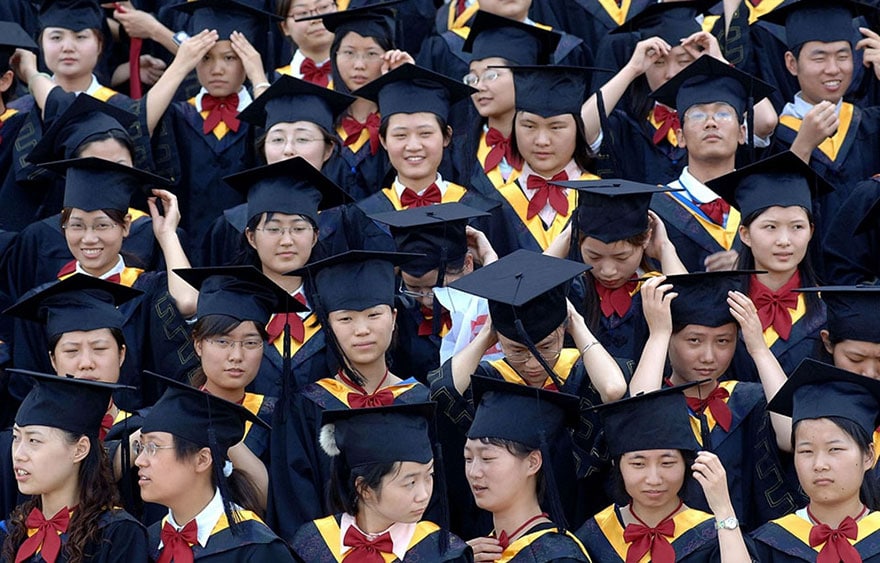"China is on the verge of becoming a scientific and technological superpower," the Washington Post following the release of the "Science and Technology Indicators" from the National Science Board (NSB) in January 2018. These numbers speak for themselves. In 2017, China surpassed the United States for the first time in terms of scientific publications. It also became the world's second-largest country in terms of R&D spending, just behind the United States. Between 2000 and 2014, the number of Chinese science and engineering graduates rose from 359,000 to 1.65 million, again surpassing the United States.
L’ambitious project of the Chinese government to move from "made in China" at "made by China" is accompanied by a proactive policy in favour of innovation, particularly in the field of artificial intelligence. The figures quoted above seem to indicate that this policy is beginning to bear fruit. However, many challenges remain to be met, particularly in the area of human resources management.
This turning point first of all impacts the innovation strategies of multinational companies, which today have no less than 1,200 R&D centres in the Middle Kingdom.
National Pride
Multinational companies often blame young Chinese graduates for a lack of experience and independence of thought. But after a few years of experience, these junior employees have acquired the skills they lacked - fluency in English, ability to work in a team - and are becoming highly sought after by headhunting firms.
Indeed, the strong need for talent in the Chinese economy leads to a high level of mobility: more than one in two employees leave their company within the first two years. But it is the departure of the most experienced employees that foreign companies fear. The situation is even more crucial in R&D, where the risk of seeing an employee leave the competition is accompanied by the fear of seeing key skills spread to the competitor and intellectual property issues.
In this war for talent, foreign multinationals must also and above all face competition from Chinese companies. The new giants such as Alibaba, Tencent, Huawei, Haier are often more attractive in terms of salary and offer faster career progression for Chinese employees. There can also be a sense of national pride in working for a Chinese company and participating in China's expansion around the world.
Incremental innovation
China is known for its ability to innovate in ways that are incremental and for its rapid prototyping cycles for product development. For George YipProfessor at Imperial College London, innovation in China does not seek radical innovation, but is "pragmatic, profitable and customer-oriented". This different relationship to innovation is a source of tension for foreign multinationals.
For the latter, it is in fact sometimes difficult to accept products that are "good enough" for the local market but which do not fully meet the quality requirements of Western markets and which may, as a result, degrade the image of the brand. Thus, the role of Chinese R&D subsidiaries in global innovation chains remains relatively limited. Most sites focus on local commercial opportunities rather than on developing innovations for the global market.
Giving a global mandate to China in terms of innovation also has strategic and political consequences for the headquarters of the multinational: more remote control of some key assets, possible reduction of projects and R&D staff in the home country, etc.
Succeeding in "keeping the good ones"
We present here a brief summary of discussions on the theme of retaining technical talent through three testimonials from major European groups gathered during a stay in Shanghai last May.
It is first and foremost the managerial skills that the multinationals we met seek to develop and retain. Given the large number of Chinese graduates entering the labour market each year, it is relatively easy to attract them. Rather, the challenge is to "keep the good ones".
Among the practices identified, one company uses HR data analysis to create a typical picture of talent leaving the organization and take action before it's too late.
Other companies seek to retain their employees by developing a sense of loyalty and recognition. Integration period, transparency and harmonization of HR practices, skills development, communication on internal mobility, quality of life at work, and pride in contributing to the business project are all levers mobilized.
Fear of Western firms
In the United States and Europe, the answer to the question of the attractiveness of R&D professions is most often the dual career ladder. This scheme seeks to enhance the value of scientific and technical careers on an equal footing with managerial careers. The technical stream proposes to recognize experts (most of the time R&D engineers) according to criteria of scarcity of knowledge, strategic value for the company, scientific influence and ability to communicate and transfer knowledge. The recognition is partly intrinsic in nature: dedicated time, influence through publications and scientific conferences.
In China, dual career ladder systems are running up against the anchoring of R&D subsidiaries in a skills development activity. Given the youthfulness of R&D in China and the technical level of the projects entrusted to it, the status of international expert is usually reserved for researchers from mature countries. This is not a very motivating prospect for young Chinese engineers, who also expect recognition of an extrinsic nature...
Faced with the growing ambitions of the Chinese government in terms of innovation, we should therefore question the prudence of Western multinationals to fully integrate Chinese subsidiaries into global innovation chains and to develop local expertise. The complexity of the Chinese context, the fear of losing control over the company's key knowledge, as well as "outdated prejudices about the innovative capacity of Chinese talent" (Yip and McKern, 2014), may lead headquarters to favour the development of strictly commercial opportunities. But the potential of the Chinese market and its promise of short-term gains should not be to the detriment of a long-term innovation strategy.
Isabelle Corbett-EtcheversProfessor of Human Resources Management Research, Grenoble Alpes University
The original text of this article was published on The Conversationeditorial partner of UP' Magazine
Anything to add? Say it as a comment.![]()












